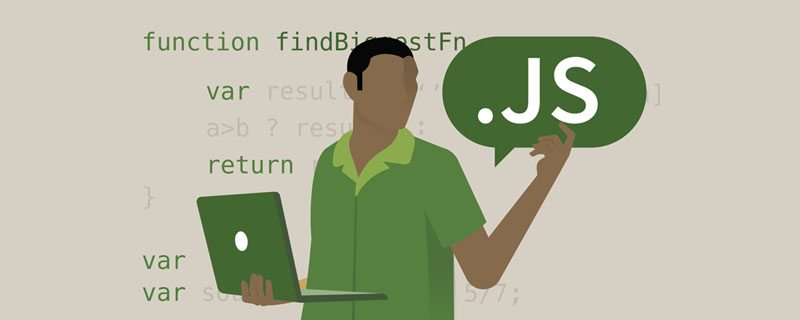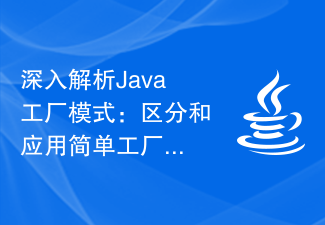 Backend Development
Backend Development PHP Tutorial
PHP Tutorial Use registration tree and factory pattern instead of singleton pattern practice (with case)
Use registration tree and factory pattern instead of singleton pattern practice (with case)Today I will introduce to you the next structural design pattern on the PHP Chinese website - registration tree mode, alias register mode or registration mode, which is used to save instances of objects frequently used in programs. The registration tree mode registers object instances to a global object tree and picks them from the object tree when needed. But unlike picking in reality, the fruit picked from the target tree still exists on the target tree, and you can continue to pick it next time.
Implementation code
The registrar pattern is very easy to understand and implement. Generally, there will be an attribute used to store multiple object instances, as well as set and get methods. The set method is used to save the object instance in the attribute array, and the get method is used to get the desired object instance.
class Registry
{
// 保存实例对象
private static $objs = [];
// get获取实例对象
public static function get(string $alias) : Object
{
if (!isset(self::$objs[$alias])) {
throw new \Exception($alias . 'not found');
}
return self::$objs[$alias];
}
// set将实例对象注册到属性$objs中
public static function set (string $alias, Object $obj) : void
{
if (!isset(self::$objs[$alias])) {
self::$objs[$alias] = $obj;
}
}
// 注销实例
public static function unset (string $alias) :void
{
if (isset(self::$objs[$alias])) {
unset(self::$objs[$alias]);
}
}
}Use registration tree mode and factory mode instead of singleton mode
We know that singleton is very useful and can avoid resources Waste etc. However, the singleton pattern has been considered a negative pattern, and it is considered difficult to test and maintain the singleton pattern. As for why the singleton pattern is considered an anti-pattern, I won’t go into details here. Interested friends can google it by themselves.
So, are there any other ways for us to ensure singletons without using singleton mode? Yes, we can use registration tree mode and factory mode to replace singleton mode. The following is the specific code:
class Registry
{
// 保存实例对象
private static $objs = [];
// get获取实例对象
public static function get(string $alias)
{
if (!isset(self::$objs[$alias])) {
return null;
}
return self::$objs[$alias];
}
// set将实例对象注册到属性$objs中
public static function set (string $alias, Object $obj) : void
{
if (!isset(self::$objs[$alias])) {
self::$objs[$alias] = $obj;
}
}
// 注销实例
public static function unset (string $alias) :void
{
if (isset(self::$objs[$alias])) {
unset(self::$objs[$alias]);
}
}
}
class DbFactory
{
const ALIAS = 'Db';
public static function create ()
{
$db = Registry::get(self::ALIAS);
if (!$db) {
$db = new Db([
'host' => 'localhost',
'user' => 'root',
'pass' => '',
'db_name' => 'test'
]);
Registry::set(self::ALIAS, $db);
}
return $db;
}
}When we need a Db instance, we only need to call DbFactory::create. This method guarantees a singleton. The following is the test code:
$db = DbFactory::create(); var_dump($db);
Related recommendations:
1.PHP Design Pattern Simple Factory Pattern
2. One article to understand the simple factory, factory method, abstract factory
3.One article to understand the proxy pattern of PHP design pattern
4.php design pattern: Bridge mode learning experience (with case code)
The above is the detailed content of Use registration tree and factory pattern instead of singleton pattern practice (with case). For more information, please follow other related articles on the PHP Chinese website!
 java框架中工厂模式的应用场景有哪些?Jun 01, 2024 pm 04:06 PM
java框架中工厂模式的应用场景有哪些?Jun 01, 2024 pm 04:06 PM工厂模式用于解耦对象的创建过程,将其封装在工厂类中,使之与具体类解耦。在Java框架中,工厂模式应用于:创建复杂对象(如Spring中的beans)提供对象隔离,增强可测试性和可维护性支持扩展,通过添加新工厂类增加对新对象类型的支持
 一文理解JavaScript中的单例模式Apr 25, 2023 pm 07:53 PM
一文理解JavaScript中的单例模式Apr 25, 2023 pm 07:53 PMJS 单例模式是一种常用的设计模式,它可以保证一个类只有一个实例。这种模式主要用于管理全局变量,避免命名冲突和重复加载,同时也可以减少内存占用,提高代码的可维护性和可扩展性。
 java工厂模式有哪些好处Dec 25, 2023 pm 05:40 PM
java工厂模式有哪些好处Dec 25, 2023 pm 05:40 PMjava工厂模式的好处:1、降低系统的耦合度;2、提高代码的复用性;3、隐藏对象的创建过程;4、简化对象的创建过程;5、支持依赖注入;6、提供更好的性能;7、增强可测试性;8、支持国际化;9、促进开放封闭原则;10、提供更好的扩展性。详细介绍:1、降低系统的耦合度,工厂模式通过将对象的创建过程集中到一个工厂类中,降低了系统的耦合度;2、提高代码的复用性等等。
 如何在Golang中应用工厂模式Apr 04, 2024 am 11:33 AM
如何在Golang中应用工厂模式Apr 04, 2024 am 11:33 AM工厂模式在Go中,工厂模式允许创建对象,无需指定具体类:定义一个表示对象的接口(例如Shape)。创建实现该接口的具体类型(例如Circle和Rectangle)。创建工厂类,根据给定的类型创建对象(例如ShapeFactory)。在客户端代码中使用工厂类创建对象。这种设计模式增强了代码的灵活性,无需直接耦合到具体类型。
 深入解析Java工厂模式:区分和应用简单工厂、工厂方法和抽象工厂的不同Dec 28, 2023 pm 03:09 PM
深入解析Java工厂模式:区分和应用简单工厂、工厂方法和抽象工厂的不同Dec 28, 2023 pm 03:09 PMJava工厂模式详解:理解简单工厂、工厂方法和抽象工厂的区别与应用场景引言在软件开发过程中,面对复杂的对象创建和初始化过程,我们往往需要使用工厂模式来解决这一问题。Java作为一种常用的面向对象编程语言,提供了多种工厂模式的实现方式。本文将详细介绍Java工厂模式的三种常见实现方式:简单工厂、工厂方法和抽象工厂,并且对它们的区别以及应用场景进行深入分析。一、
 C++ 函数重载和重写中单例模式与工厂模式的运用Apr 19, 2024 pm 05:06 PM
C++ 函数重载和重写中单例模式与工厂模式的运用Apr 19, 2024 pm 05:06 PM单例模式:通过函数重载提供不同参数的单例实例。工厂模式:通过函数重写创建不同类型的对象,实现创建过程与具体产品类的解耦。
 Java工厂模式详解:简单工厂、工厂方法和抽象工厂Dec 28, 2023 am 10:23 AM
Java工厂模式详解:简单工厂、工厂方法和抽象工厂Dec 28, 2023 am 10:23 AMJava工厂模式详解:简单工厂、工厂方法和抽象工厂工厂模式是一种常用的设计模式,它用于根据不同的需求动态创建对象,将对象的创建与使用分离,提高代码的可复用性和可扩展性。在Java中,工厂模式主要有三种形式:简单工厂、工厂方法和抽象工厂。一、简单工厂模式简单工厂模式是最基本的工厂模式,也是最简单的一种形式。它通过一个工厂类来创建对象,根据不同的参数来决定创建哪
 理解PHP面向对象编程中的工厂模式Aug 10, 2023 am 10:37 AM
理解PHP面向对象编程中的工厂模式Aug 10, 2023 am 10:37 AM理解PHP面向对象编程中的工厂模式工厂模式是一种常用的设计模式,它用于创建对象的过程中将对象的创建和使用解耦。在PHP面向对象编程中,工厂模式可以帮助我们更好地管理对象的创建和生命周期。本文将通过代码示例来详细介绍PHP中的工厂模式。在PHP中,我们可以通过使用工厂模式来实现对象的创建和初始化过程,而不是直接使用new关键字。这样做的好处是,如果将来需要改变


Hot AI Tools

Undresser.AI Undress
AI-powered app for creating realistic nude photos

AI Clothes Remover
Online AI tool for removing clothes from photos.

Undress AI Tool
Undress images for free

Clothoff.io
AI clothes remover

AI Hentai Generator
Generate AI Hentai for free.

Hot Article

Hot Tools

mPDF
mPDF is a PHP library that can generate PDF files from UTF-8 encoded HTML. The original author, Ian Back, wrote mPDF to output PDF files "on the fly" from his website and handle different languages. It is slower than original scripts like HTML2FPDF and produces larger files when using Unicode fonts, but supports CSS styles etc. and has a lot of enhancements. Supports almost all languages, including RTL (Arabic and Hebrew) and CJK (Chinese, Japanese and Korean). Supports nested block-level elements (such as P, DIV),

Dreamweaver CS6
Visual web development tools

SublimeText3 Mac version
God-level code editing software (SublimeText3)

SublimeText3 Linux new version
SublimeText3 Linux latest version

SublimeText3 English version
Recommended: Win version, supports code prompts!





